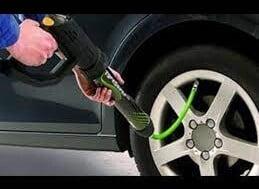all english artical in end
مستوى الجهد
• (المستوى الأول: يمكن أن يتعرض الشخص للكهرباء التي لا تتجاوز 30 فولت في حالة التيار المتردد و 60 فولت في حالة التيار المباشر (الحد الذي يمكن للشخص العادي التعامل معه دون ضرر
• المستوى الثانى : جميع الأنظمة التي ذكرناها مثل المحرك والضاغط وغيرهما لا يمكن التعامل معها من قبل إنسان وهي مغلقة ولها دوائر حماية تضمن ذلك في حالة حتى يعتزم العامل البشري الوصول إليهم للصيانة أو غيره (اتصال مباشر) والسيارة في وضع الاستعداد (CAR OK) ، تعمل دوائر الحماية على فصل السيارة على الفور لضمان عدم تعرض الشخص لهذا الجهد العالي وحدوث التيار الكهربائي الصدمة • يشمل هذا العنصر أيضًا التلامس غير المباشر ، والذي يضمن عدم تعرض الشخص لأي جهد كهربائي في حالة ملامسته لجسم السيارة أو الأجزاء الموجودة داخل غطاء السيارة. يعتمد هذا على مقدار مقاومة العزل بين جسم السيارة والأجزاء الكهربائية ، والتي تنص على أن تكون المتطلبات 500ohm / v في حالة التيار المتردد و 100 ohm / v في حالة التيار المباشر. 2.الحماية ضد الماء (متطلبات مقاومة الماء) • تتمتع المكونات الكهربائية الموجودة خارج المقصورة الرئيسية بدرجة حماية لا تقل عن IPX7 ، والتي تنص على اجتياز هذه الأجزاء لاختبار الغرق تحت الماء. لاختبار الرش بالماء في أنبوب متحرك لمدة 10 دقائق 3. الحماية من الحوادث مركز الجاذبية. بطاريات السيارات الكهربائية ليست معبأة بشكل جيد فقط ؛ تقع في أرضية السيارة وهي محمية بشكل خاص وفقًا للتصميم. ومن الآثار الجانبية المرحب بها أنه نظرًا لأن مركز جاذبية السيارة منخفض جدًا ، فمن غير المرجح أن تميل السيارة حول محورها بقدر ما ستدور في السيارة التقليدية.• الجهد العالي. السيارات الكهربائية “آمنة في جوهرها” كما ذكرنا. ولكن في حالة وقوع حادث ، يتم فصل البطارية تلقائيًا عن المكونات والكابلات الأخرى عالية الجهد (فصل نظام البطارية عن مجموعة نقل الحركة) حيث تغلق نفسها داخل الحاوية المدرعة الخاصة بها بحيث لا يوجد جهد بين البطارية في غضون مللي ثانية محطات. استحالة حدوث أي جهد كهربائي في أي جزء من أجزاء السيارة سواء كانت مكونات مكسورة أو أسلاك مكسورة نتيجة حادث لتجنب حدوث ماس كهربائي. ومع ذلك ، يستمر النظام الكهربائي بجهد 12 فولت في العمل ويتم توفير مصابيح التحذير من الخطر. هذا الإجراء الأمني وحده يجعل من المحتمل اندلاع حريق مفاجئ. • لا يوجد وقود أو سائل قابل للاشتعال. في حين أن تسرب الوقود السائل من السيارة التي تعمل بالبنزين أو الديزل قد تشتعل فيه النيران وتتسبب في حدوث انفجار ، فإن بطاريات السيارة الكهربائية تحترق بشكل عام ببطء وتتيح الوقت الكافي للإخلاء من موقع التصادم
1. Voltage level • Level-A: A person can be exposed to electricity that does not exceed 30V in the case of alternating current and 60V in the case of direct current (the limit that a normal person can deal with without harm)
• Level-B: All systems that The efforts we have mentioned, such as the motor, the compressor, and others, cannot be dealt with by a human being, and they are closed and have protection circuits that ensure that in a situation until the human worker intends to reach them for maintenance or other (Direct contact) and the car is in a ready mode (CAR OK), the protection circuits work to separate The car immediately to ensure that the person is not exposed to this high voltage and the occurrence of an electric shock • This item also includes indirect contact, which ensures that the person is not subjected to any electrical voltage in the event of contact with the car body or parts inside the car hood. This depends on the amount of insulation resistance between the car body and the electrical parts, which stipulates that the requirements be 500ohm / v in the case of alternating current and 100 ohm / v in the case of direct current. 2. Protection against water (Requirements for waterproof) • The electrical components outside the main compartment have a degree of protection not less than IPX7, which stipulates that those parts pass the underwater sinking test. To test the spray with water in a moving tube for 10 minutes 3. Accident protection The Center of Gravity. Electric vehicle batteries are not only well packaged; It is located in the floor of the car and is specially protected according to the design. A welcome side effect is that because the car’s center of gravity is so low, it is less likely that the car will tip around its axis as much as it would in a conventional car. • High voltage. Electric cars are “intrinsically safe” as mentioned. But in the event of an accident, the battery is automatically disconnected from other high-voltage components and cables (disconnecting the battery system from the powertrain) as it locks itself inside its armored container so that within a millisecond there is no voltage between the battery terminals. The impossibility of any voltage in any part of the car, whether broken components or broken wires as a result of an accident, to avoid the occurrence of a short circuit. However, the 12 volt electrical system continues to operate and the hazard warning lights are supplied. This security measure alone makes a sudden fire unlikely. • There is no flammable fuel or liquid. While a liquid fuel leak from a petrol or diesel-powered vehicle may catch fire and cause an explosion, electric vehicle batteries generally burn slowly and allow time Enough to evacuate from the collision site






